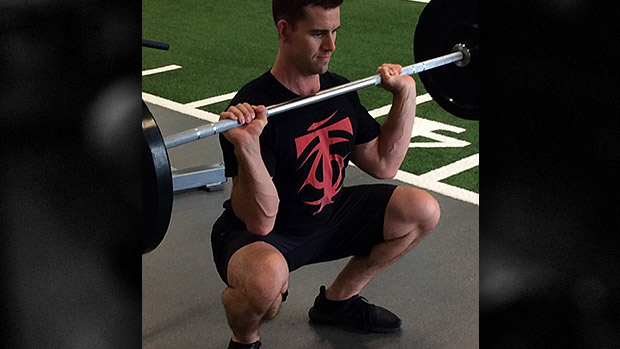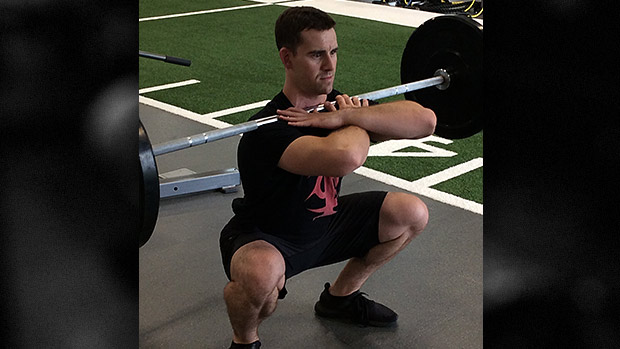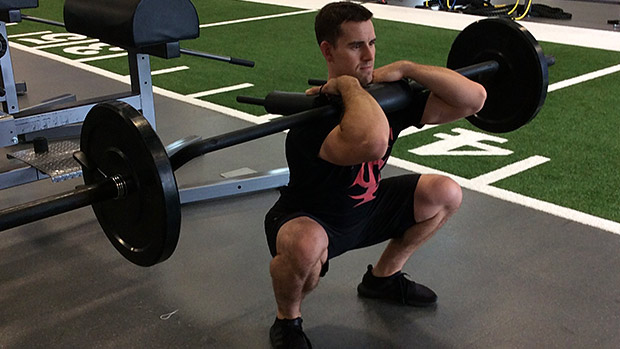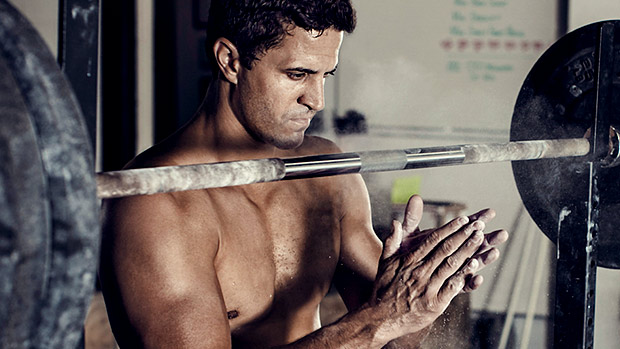The Best Squat for Most Lifters: Back Squat
The back squat is the primary squat variation in most training programs for good reason. It allows you to lift more weight than other variations, which will ultimately lead to greater strength gains. Although it does require technique, it's one of the easier squat patterns for a beginner to pick up.

If you have a shoulder injury, you can always substitute a barbell back squat for a safety-bar back squat if your gym has one.
This exercise isn't for beginners or lifters lacking thoracic spine mobility. It's fantastic for developing lower body and anterior core strength, but it takes a bit of time to learn, and a lot of beginners royally screw it up. The traditional front squat requires a decent amount of mobility. Take a look:
Proper Front Squat

You need to be able to lift your elbows up and keep them high while squatting. This is called a rack position, and a lot of people either lack this ability, or don't understand how to hold the bar.
Improper Front Squat

Notice that the elbows are pointed down. If you don't have the mobility to do a front squat, you could use a cross grip or straps. However, most beginners have a hard time keeping the bar in place when doing these. If your gym has a safety squat bar, this would be your best bet to learn the movement.
Cross-Grip Front Squat

Even if you can't get in the rack position, you can use this alternative.
Front Squat Using Straps

Another alternative to the rack position. If you understand the front squat movement pattern well and have the straps, try it.
Safety-Bar Front Squat

If you have proper front squatting mechanics, this is another valid alternative to the rack position.




